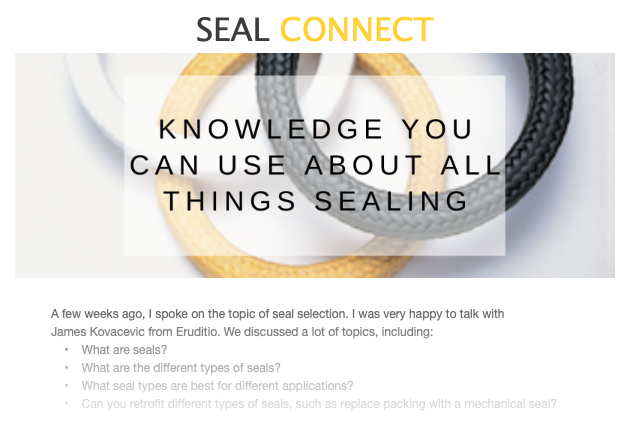Seales on Seals: An O-Ring Guide
Rotating equipment (such as pumps, motors, mixers, and agitators)is used in virtually every process industry. Most rotating assets have more than one O-ring installed. But what is an O-ring, and how do you decide which type an asset needs? This article answers all these O-ring questions and more.
What Is an O-Ring?
An O-ring is a mechanical gasket with a round cross section. The name O-ring comes from the fact that the item is shaped like the letter O and looks like a ring.
An O-ring is a closed loop circular band that. In most cases, it is made from an elastomer or other pliable material. Elastomers may be natural (often latex-based) or synthetic (made from petroleum). Some synthetic materials are an American Society for Testing and Materialsclass of fluorinated, carbon-based synthetic rubber, commonly known as fluoroelastomers.

What Are O-Rings Used for?
O-rings prevent fluid (gas or liquid) leaks in static and dynamic applications. The material of each O-ring depends on the application.
Some of the things that need to be considered are:
- Is the O-ring static or dynamic?
- To what temperatures will the O-ring be exposed?
- What is the rotational speed (if installed in a dynamic application)?
- To what pressures will the O-ring be exposed?
- What is the chemical make-up of the fluid being sealed (abrasive, contains fibers, changes state)?
If unfamiliar with O-rings or if you have an uncommon application, you should consult your O-ring manufacturer for assistance.
How Are O-Rings Measured or Sized?
O-rings fit inside a gland or cavity designed to hold a specific sized O-ring. To determine the size needed, you will need the cross section and inside diameter of the application in order to find the correct O-ring. Consult your O-ring handbook for details on determining the cavity dimensions and the specific O-ring size that corresponds with the cavity dimensions you need or have. This applies for both static and dynamic O-rings.
You also have to determine the squeeze of the O-ring. The squeeze is the minimum and maximum compression required for your application. Consult your O-ring handbook for details on determining the squeeze for the specific O-ring size that corresponds with the cavity dimensions you need or have.
Do O-Rings Need Lubrication?
Lubricants are commonly used on O-rings at assembly to help protect the O-ring from damage caused by abrasion, pinching, or cutting. Lubrication also helps protect some polymers from degradation caused by atmospheric exposure. The presence of a lubrication helps extend the service life of the O-ring.
The chemical makeup of the lubrication needs to be compatible with the application and the O-ring materials of construction, so consult your manual. If no lubrication or the wrong lubrication is used, failure may occur.
How Do O-Rings Fail?
O-rings fail for many reasons. Some of the most common are:
- Chemical incompatibility with fluid being sealed
- Excessive vibration
- The application’s pressure exceeds the pressure limits of the material of construction
- The application’s temperature exceeds the temperature limits of the material of construction
- Improper installation
- Rough, worn, or sharp surfaces
- Inadequate lubrication
- Wrong lubricant selected
How Do I Know if My O-Ring Is Failing, and When Should I Replace My O-Ring?
A common indicator of O-ring failure is visible leakage, odor, and equipment performance issues. O-rings should be replaced for many reasons, including:
- The O-ring can no longer provide an effective seal
- Whenever the equipment is removed for maintenance
- When the application has changed and is no longer compatible with the O-ring material
Conclusion
This Seales on Seals blog attempted to help you understand:
- What is an O-ring?
- What is an O-ring used for, and how do you select one?
- Do O-rings need lubrication?
- Why do O-rings fail , and when should you replace it?
Always consult with your manufacturer when you have questions or concerns.
References
Parker Hannifin Corporation. (2007). Parker O-Ring Handbook. Lexington, Kentucky: Parker Hannifin Corporation.
Volk, M. (2014). Pump Characteristics and Applications. Boca Raton, Florida: CRC Press.
Fluid Sealing Association. (2000). Mechanical Seal Handbook. Wayne, Pennsylvania: Fluid Sealing Association; http://www.fluidsealing.com/mechanical-seals/mechanical-seals-publications.
 SEAL CONNECT
SEAL CONNECT Find Your Sealing Solution
Find Your Sealing Solution